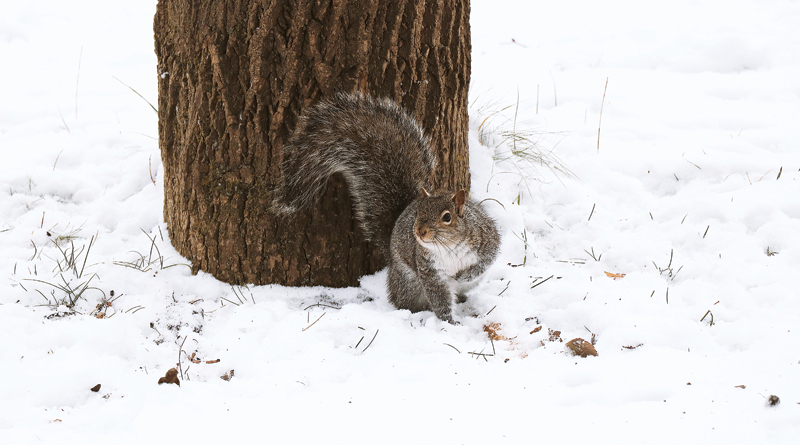BITS OF WEATHER LORE – Life In The Outdoors

It’s a dark and dreary winter day. The sky is gray. The temperature is below freezing by our thermometer. There’s a cold wind, I found when I went out with our dogs soon after getting up. Snow fell last night and covers the ground, though it’s only about an inch deep. It decorates the branches of trees and bushes like frosting on a cake.
It’s a dark and dreary winter day, a day for me to stay inside, except when I think the dogs need to be taken out.
Gray sky, temperature below freezing, but just a degree or two, snow on the ground and on the branches of trees and bushes, winter in every way, except in degree. Temperature thirty degrees for this time of year is mild in northern Indiana. The temperature has been mild all winter in northern Indiana, except for a few days in January when the temperature dropped to eight degrees.
There have been severe winter storms this winter in North America, in the northeast and the northwest but not in Indiana. This has been one of the mildest winters on record in Indiana and in many other states of the U.S. This has been one of the nine warmest winters of record around the world.
I wrote a week or two ago of mourning doves at one of my bird feeders in January. I hypothesized that the doves were a sign of an early spring. But were they, or were they birds that did not migrate south last fall, birds that had stayed in Indiana through the winter, though they hadn’t been coming to my bird feeder? Noting birds and their activities is a bit of weather lore, predicting weather based in the presence or absence and activities of birds.
Looking at clouds, their kind and shape, is also weather lore. Cumulus clouds, puffy white clouds, generally signify fair weather but thunderheads frequently forecast approaching rain and giant thunderheads indicate severe storms including tornadoes.
Cumulus clouds with a greenish hue, my father said, were a sign of coming hail. Once, when we were down town in the car and Dad saw a greenish color develop, he drove home in a hurry and put the car in the garage to protect it. Then from the glassed in front porch we watched the coming storm.
Hail fell. My brother and I went outside, got hailstones and sucked on them. But the hail was followed by a tornado that uprooted the trees in our yard and severely damaged our house. It blew the garage away and dropped a tree across the roof of the car.
Stratus and cirrus clouds generally portend fair weather. Nimbus clouds indicate coming rain. The color of clouds is also an indication of approaching weather. Think of this little jingle of sailors, “Sun red at night, sailors’ delight, Sun red in the morning, sailors take warning.”
Animals are also indicators of coming weather. Squirrels and rabbits, mice and rats, raccoons and opossums, even foxes hole up before a rain. Bats roost and nest in chimneys but before a heavy rain they fly down to the bottom of chimneys. If there is a fireplace, bats erupting into a living room are an almost sure sign of coming rain, and a terrifying experience to many people.
Many insects foretell a coming rain. You don’t see ants out when rain is falling, or flies or mosquitoes or bees or wasps, butterflies or moths.
Plants too, of course, are weather indicators. Pepper-and-salt, also called harbinger of spring, a wildflower with very small blossoms will bloom in the woods later this month. Grass and weeds will grow. Buds will swell on trees and bushes and the earliest leaves will open.
All nature is interrelated. A change in the weather will bring about a change in the activities of birds and other animals and the growth of plants.
- Birds As Weather Forecasters – Life In The Outdoors - December 17, 2021
- Rare Bird Spotted In Indiana – Life In The Outdoors - October 8, 2021
- MY EXPERIENCE WITH DEER – Life In The Outdoors - July 30, 2021


